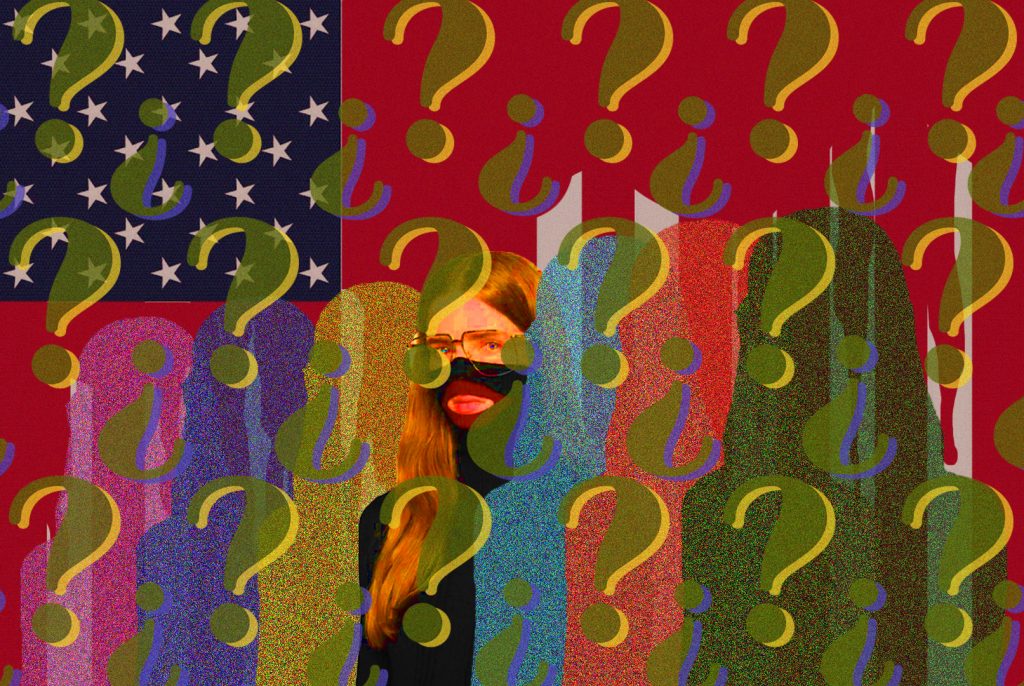I have a huge book with a huge swastika on it. It is called “The Rise and Fall of the Third Reich: A History of Nazi Germany,” written by American war journalist William Shirer.
But, many people assume it’s something akin to “Mein Kampf,” for some reason.
Case in point, when my roommate first moved into our dorm room (I had already arrived and settled in), her uncle, who was helping her, saw the book on my desk, and exclaimed in instant horror:
“My God, your roommate is a Nazi!”
Now, the whole episode is rather funny and I don’t blame the man the slightest bit (he eventually got around to reading the title and going “Oh, nevermind”). The book had gotten me weird glances before. Carrying a plastic-pressed swastika around will get you that pretty quickly. One time, a high school teacher even demanded to see the title of the book, because she was worried. At home, I cover it up when guests are around, like it was truly “Mein Kampf” and not a 1,000-page history book.

Now, on a separate note, the thing I like about the United States is that you can strike up a conversation about politics with anyone. The thing I dread about the U.S. is that anyone can rope you into a political conversation. While being politically-aware and even politically-enthusiastic is a sign of an educated nation, in U.S.’s case, it’s a bit more complicated than that. Since the two sides of American politics are so strongly at odds with each other, its concerned citizens are more likely to be pitted against each other very stubbornly. This has set the whole nation of edge, with strongly opinionated persons bursting forth from the crowd shaking fists and flags to fault anything they seemed worthy to be faulted. And while this watchful mood helps call out many injustices, it has also made many of us very twitchy and quick to judgement.
Injustices are like cockroaches. Now that our eyes are opened we see so of them scurrying around out there. Now, we do our best to kill the cockroaches—to do so we have to be swift and quick before they go under the fridge and are forgotten. But, testifying from my horrible personal experience, there’s a kind of brown cricket out there, too, that looks exactly like cockroaches from afar. You’d have to get up close and personal to realize that they’re not, assuming, of course, that you haven’t brought the shoe down.
People that are on edge won’t stop to see if you’re a cockroach or a cricket. In a society that’s perpetually on edge, first impressions are everything. But anyone who’s gone to a job interview or a date or any kind of important meetings know that good first impressions are hard. It is just a fact of life. This fact is especially painful for those of us who do art, because a big part of art is first impression (ever anxiously stand next to your work at an art gallery praying that someone would pay $129.99 for it?) Case in point: the graphic designer that made the cover for “The Rise and Fall of the Third Reich” didn’t do me any favors, putting one big swastika on the front cover AND one small one on the spine—carrying it outside without attracting glances requires so much strategic arm-hand-body coordination I’m now qualified to join Circe du Soleil.
Another example: the Gucci “blackface” sweater (look it up, it’s hilarious in an awkward way). Now, my guess was that whoever designed the sweater was thinking something along the line of, “Gee, what a dream it would be to wear a turtleneck that covers half your face and eat at the same time.” The lips accent and the color black were after-thoughts, supposedly, after which they never stepped back and have that “Wait a minute” moment.
I’m assuming all of that because, as a graphic design student, I understand that is now dumb designs happen: they starts with weird concepts that could either be cool or disastrous, and things go south from there. The thing is, I’m not sure that had the sweater been pink, white, yellow, or green, it would’ve gotten so much backlash.

As society becomes more aware, designers, along with everybody else, should become more aware. But even if the lesson is pounded into your brains, moments of total blindness still happens. We are getting too quick to point out injustice and corruption that sometimes we ignore context and explanation, as in the case of my roommate’s uncle. In our attempt to scourge the nation of malice we have come to impose malicious context on human ignorance. It is especially tricky for artists, whose works are open to public judgement, to create something that is new and interesting and inoffensive — especially inoffensive, because all those who’s ever written a school paper know that complete thorough research can never be a guarantee. It takes time to learn things, not only for the artist, but the public whose is constantly plastering their viewpoints over the works and words of others. How can anyone expect to fight a supposed wrong if they don’t know how the wrong has come to be?
In this age of rage and anxiety, it’s become too common to accuse people of social “crimes” they did not commit, and too common still to be doused in burning humiliation when recanting your accusation. It is not a happy business for anyone but people seeking to undermine your cause and validity. So the next time you plan to metaphorically smash a cockroach, make sure it is not a metaphorical cricket first. Just because something is outrageous, it doesn’t mean that it’s malicious. But then again, just because something isn’t malicious, it doesn’t mean that it isn’t outrageous. That is why I only read my huge Nazi book at home now.


























